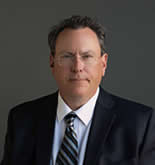"If you don't know where you are going, you will probably end up somewhere else.", so said Laurence J. Peter, a professor at the University of Southern California whose works touched the business world. (He is well known for the "Peter Principal".) Peter's above quote essentially points out that action lacking a clear objective will likely lead to unwanted or unintended consequences.
Businesses goals of profits, growth, and increased/maintained market share are some of the significant elements of profitable business. These elements have known consequences, for example allowing accounts receivables to linger will likely result in reduced cash flow or ignoring business development will likely result in reduced volume of future work. But some business functions can lead to unintended consequences, safety for example.
True story: Say you are a general contractor on a construction site and hire subcontractor(s). You lease a generator from an equipment rental company. The generator will be available for use by several other contractors on site though neither of the two general contractor employees will use it. The general contractor believes the leased generator will be equipped with a ground fault circuit interrupter ("GFCI"). The leased generator in fact is not equipped with a GFCI. One of the subcontractor employees sustains a fatal injury (electrocution) from use of the generator. Neither of your two employee's is exposed to the non GFCI protected generator. But you are cited by OSHA under the OSH Act. (29 C.F.R. sec. 1910.12 (a)) You argue none if your employees were exposed to the hazard and therefore not responsible for injuries sustained by others on site. Holding: You ARE responsible for the safety of others/nonemployees on site. Import of this decision: You are responsible for the safety of others (including non-employees) on your work site. (Many judicial districts in the US will uphold the general contractor responsibilities via OSHA citation EVEN where none of its employees or overt action by the general contractor caused the injury cited.)
End result, a general contractor may be held responsible under the OSH Act multi-employer work site liability doctrine. Summit Contractors, Inc. v. Secretary of Labor and Occupational Safety and Health Review Commission, No. 10-1329 (D.C. December 14, 2011) (Read OSHA Directive Number CPL 2-0.124 for more detail on OSHA Multi-Employer Citation Policy.)
But wait, the unintended consequences may not yet end here. A wrongful death claim may be filed against the general contractor (and possibly others on site). Worker's compensation laws generally bar employees from suing their employers for work related injury/fatality but there no such protections against law suits aimed at others on site exist, for example the general contractor.
But wait, there are other potential unintended consequences. Publicity. OSHA issues press releases of its citations naming the companies/businesses cited. Future clients read the paper, what will they think about your business safety practices?
But wait once again. Say you are a business with multiple work sites around the state/country. If OSHA believes serious hazards found at one site likely exist at your other work sites (due to your work safety practices at one site) it may decide to inspect your other work sites. What will your clients for whom you are performing services think of OSHA inspections taking place on their sites due to your presence?
But wait there is more. Say your business receives a citation for a hazard and say you negotiate and resolve the matter. You are pleased and move on. But if you receive another citation for a substantially similar violation fines can reach up to $70,000; For a single none complying condition because it is a "repeat" violation.
If the foregoing sounds tangled, messy and unpleasant you are correct. After all you just want to run a business. What is the likelihood of any or all of the above occurring? Hard to tell and attempts to forecast their likelihood are neither predictable nor wise. But remember Laurence J. Peter's saying, "If you don't know where you are going, you will probably end up somewhere else."
Know where you want to go. Know what needs be done and do it. Proactive steps include sound safety training programs on topics relevant to the work crews handle, a written safety program combined with periodic training (include both crew and managers), conduct JSA/JHA (Job Safety Analysis/ Job Hazard Analysis) with employees (again, crew and managers) and if subcontractors are involved get them involved too. Have a plan. It takes a little time and effort. A sound safety program strongly supported by top management makes a big difference in leading you to where you want to be rather than somewhere else.
Greg Gerganoff, ASP, CSP, Esq., is an OSHA / MSHA Safety field and compliance expert with experience in the heavy construction, oil and gas, mining, pipeline, and trenching and excavation industries.
©Copyright - All Rights Reserved
DO NOT REPRODUCE WITHOUT WRITTEN PERMISSION BY AUTHOR.










